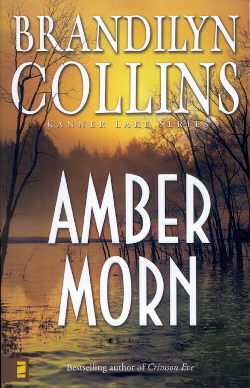...time needed to
resolve the story is the driving force...
As I’ve noted in my previous
articles on this subject, in my suspense novels I want to push the
action of the crisis/climax as close to the end of the book as
possible. Too long of a resolution is going to drag out the book. And
I’ll tell you, even a bang-up book, if it drags in the end, will leave
the reader unsatisfied. You gotta leave ’em with a bang. And yet, by
definition, a resolution is hardly the biggest bang of the story. Hence
the challenge to write a satisfying one.
Recently I read a well-written
suspense that disappointed me in the end. The crisis/climax took place
a good four or so chapters before the end of the book. Those final
chapters were all pure resolution in various parts of the main
character’s life. No conflict, just tying up loose ends. It was boring.
Last month we left off with
this: “To help find the right [concluding] scene, I ask myself two
questions.” What are those questions?
1. How far into the future—that
is, after the climax ends—do I need to go in order for the loose ends
to be tied up?
2. What is the best scene in
that time period that will (a) give readers a satisfying look at my
character’s life after all the traumatic events, and (b) allow a
natural insertion of necessary explanations regarding how everything
during the main story really happened?
1. How far into the
future? In Brink of Death (first in my
Hidden Faces series) I only needed to move forward two days for the
resolution to take place. In Violet Dawn, (first of
Kanner Lake series) I had to move forward six months. Both of these
novels push the action in the climax up to the last sentence. But in Brink
of Death, all the fallout and sorting out from that climactic
scene only takes a couple days. In Violet Dawn, the
whole main story takes place in about fourteen hours. But the fallout
of those events takes months to resolve. If I wrote a scene two days
later, I’d leave way too many loose ends for the reader.
So, time needed to resolve the
story is the driving force. I don’t have any “rule” about how little or
how long the time should be. It’s simply whatever will satisfy the
reader for that particular book. This doesn’t mean, for example, that
the bad guy has to go through a trial, be convicted, sentenced, put on
death row and executed. It’s enough for the reader to know the bad guy
has been caught, is off the streets, and there’s no question he’ll be
convicted. Now, if there is a question as to conviction, that would be
one reason to place the resolution months or even a year or so later,
after the trial.
|
Problem is, the further forward
you have to place the resolution, the harder it is to write. Readers
may not be content simply to see the character that much later, all
perfectly fine and emotionally healed after the ordeal. They’ll feel
cheated if they’re not given at least a taste of the struggle to get to
that place of strength. So this kind of resolution is going to have to
creatively weave in some of those struggles of the past months, and
show that the character is continuing to struggle in some way.
Some continuing struggle at the
end of the book is a good thing. Life isn’t perfect, and even in a
happy ending there should be signs of challenges ahead.
2a. Give readers a
satisfying look at my character’s life. Suspense may be known
as a plot-driven genre, but I still say in the end it’s all about the
characters. The character arc for the hero/heroine as well as other
supporting characters is critical. This is why I ask myself the 2a
question before the 2b—how to allow a natural insertion of all
explanations. If I allowed 2b to lead me in creating the
scene, I’d end up with a boring scene full of facts and
tying-up-loose-ends narrative. When I structure the scene for the best
picture of the character’s personal life, I’m far more likely to write
an interesting, compelling scene. A shell of a scene for a mere
“tell-all” will be boring, I assure you. But if the scene shows the
character on the other side of the trauma, working on getting on with
his/her life, there can be some natural personal conflict within it,
and the reader will be able to see what the character has learned
through the story events.
Problem is, in a personal-based
resolution it’s doggone hard to weave in all those explanations in a
natural way. It requires some real creativity. Next month we’ll look at
2b and some techniques for doing that.

|